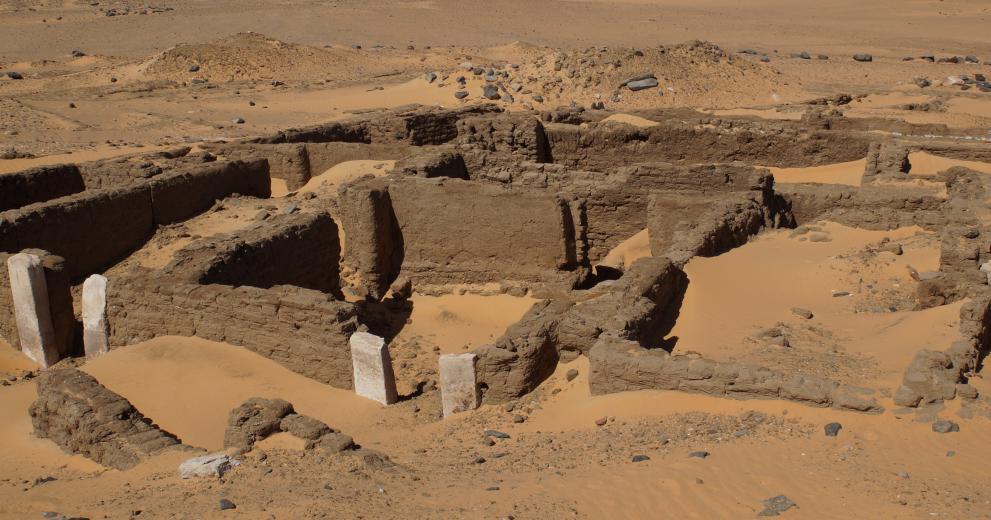Amara West is a town site about 100 kilometres south of the Second Cataract. It was founded under Pharaoh Seti I and served as the administrative centre of the southern part of the Nubian province in the later New Kingdom. Read more ...

1500 to 1070 BC
Pharaonic period
Egypt and the societies of the Middle Nile valley have a long and complex history of contact and interaction, which can be demonstrated from the Stone Age onwards. The Egyptians were interested in a wide range of resources which originated from Nubia or passed through it from areas further south. E.g. they quarried hard rock in the Libyan Desert for sculptures from as early as the Old Kingdom (c. 2700–2200 BC). The exploitation of the gold deposits in the Eastern Desert has been proven from the Middle Kingdom (c. 2040–1750 BC) onwards, but may also be older.
Egypt's political agenda towards the south was directed towards eliminating any threat to their economic interests and their national security that might arise from increasingly mighty neighbours. By the time of the early Middle Kingdom the Egyptians perceived the Kingdom of Kerma, known to them as Kush, to pose such a threat. Consequently, they secured the Lower Nubian Nile valley, between Aswan and the Second Cataract with a chain of 17 fortresses. In the following centuries, the dealings with Kush grew and waned with the political power of Egypt at the time.
At the onset of the New Kingdom, about 1500 BC, the Egyptians finally set out to conquer Kush. After a series of military campaigns they destroyed the capital at Kerma and built a large fortified settlement with a temple near the Bronze Age town. In the subsequent centuries, the Egyptians founded further towns and temples up to Jebel Barkal, the holy mountain below the Fourth Nile Cataract, which they considered to be an abode of their state god Amun. The offical border of Egyptian control was at the Hajar al-Merwa, above the Great Nile Bend.
Pharaonic rule over the Middle Nile valley lasted until the end of the New Kingdom (c. 1070 BC), when Egypt became too weak to keep up its control and administration due to troubles back home. Some Egyptian towns and temples continued to function into the subsequent Napatan period, or were reactivated in this era.














